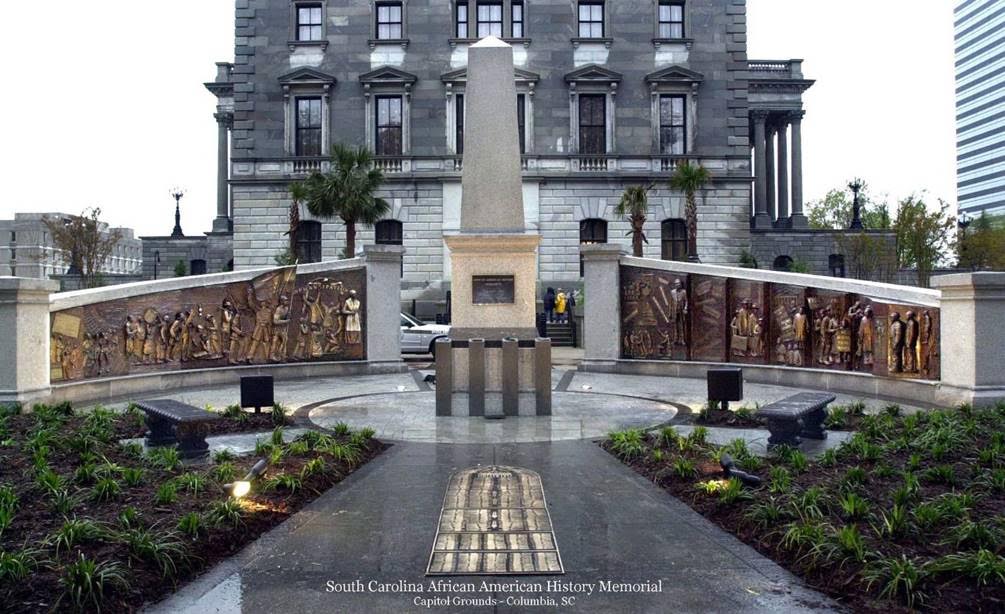The Local newsletter is your free, daily guide to life in Colorado. For locals, by locals.
Following the controversy surrounding the removal of the Confederate flag from South Carolina’s statehouse grounds in Columbia (it was taken down on July 10), another debate has begun. This one is not about a racially charged symbol of our past—and, many would argue, our present—but a sculpture. While it might not seem like an issue Coloradans need to concern themselves with—beyond the perhaps overly optimistic perspective that we should all care about the treatment of our fellow Americans—the monument in question, which depicts the history of African Americans in South Carolina (pictured, above), was created by a Colorado artist.
 His name is Ed Dwight (pictured, right, before his Denmark Vesey Memorial at Hampton Park in Charleston, S.C.), and he’s now 82 years old. In 2000, he was approached to design and build the piece as part of a bipartisan compromise: The Confederate flag would be moved from South Carolina’s Capitol dome to the Confederate Monument—where it was most recently located—in exchange for resurrecting a monument on African American history in the state. The 50-foot granite sculpture, which includes 12 bronze panels that surround an obelisk and pedastal, was dedicated in March 2001. “I wrote the real history of South Carolina,” Dwight says, from the slave markets in Charleston in the 1600s through the Civil War, emanicipation, and, finally, the emergence of blacks as astronauts, legislators, athletes, and more (Dizzy Gillespie, Joe Frazier, and Marian Wright Edelman all make appearances). It was built in Dwight’s studio in Denver, then assembled on-site.
His name is Ed Dwight (pictured, right, before his Denmark Vesey Memorial at Hampton Park in Charleston, S.C.), and he’s now 82 years old. In 2000, he was approached to design and build the piece as part of a bipartisan compromise: The Confederate flag would be moved from South Carolina’s Capitol dome to the Confederate Monument—where it was most recently located—in exchange for resurrecting a monument on African American history in the state. The 50-foot granite sculpture, which includes 12 bronze panels that surround an obelisk and pedastal, was dedicated in March 2001. “I wrote the real history of South Carolina,” Dwight says, from the slave markets in Charleston in the 1600s through the Civil War, emanicipation, and, finally, the emergence of blacks as astronauts, legislators, athletes, and more (Dizzy Gillespie, Joe Frazier, and Marian Wright Edelman all make appearances). It was built in Dwight’s studio in Denver, then assembled on-site.

Now that the Confederate flag has come down, some are arguing that the monument should also be removed. The compromise, they say, has been broken. The petition, “Remove the African American Monument,” on Change.org already has more than 41,000 signatures. It states, in part, “It has been stated that the battle flag must be removed due to it being offensive to the African American community, and invoking upon that community reminders of the dark history of slavery. To the same point, the African American Monument depicts slave ships, mistreatment and words such as ‘segregation’ and ‘Jim Crow’. This being the case, it is undeniable that this monument can and does serve to invoke in the white community feelings of shame, humiliation and offense, serving as a constant reminder of the dark history of slavery.”
Over his 30-plus-year career, Dwight has completed more than 100 pieces of public art around the country. Closer to home, he’s responsible for the Martin Luther King Jr. monument in City Park and the William E. Smith sculpture at DIA, among others. He hopes he doesn’t have to see one of his works dismantled. Reflecting on the African American History Monument’s dedication, he says, “I knew ultimately there would be backlash.”








